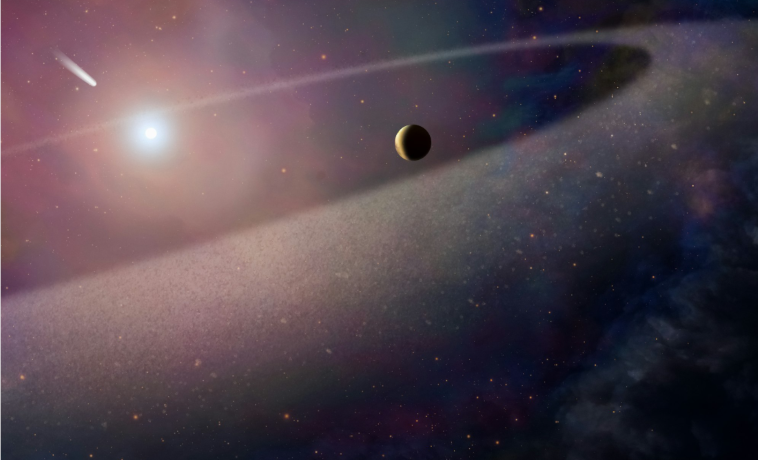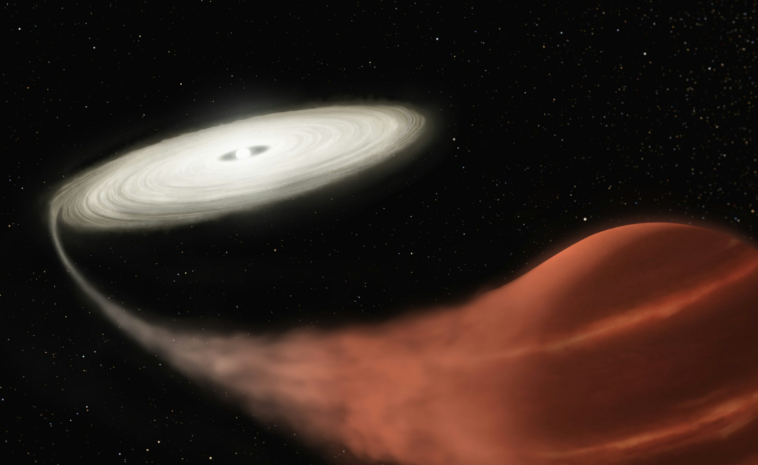The end of the Sun: how will it happen?

The Sun is in its prime. It was formed in a gigantic cloud of gas and dust 4 billion and 600 million years ago, and consists of hydrogen (74%), helium (25%) and other gases (1%). In the core of the Sun, the temperature reaches an astonishing 15 million degrees Celsius.
At such a temperature, atoms are broken into particles that run wildly, collide and cause numerous physical and chemical reactions.
In these reactions, every second 600 million tons of hydrogen are processed into helium, and four million tons of matter are converted into energy.

Living organisms on Earth live from that energy. But this is a small thing for the Sun, and it will live peacefully for the next five billion years when it will run out of hydrogen. Then it will start to die.
The End of the Sun will take place in stages.
Powerful, super-giant stars burn up their fuel violently and end their lives in a tremendous explosion that shakes the entire galaxy, then transition to the neutron star phase, or become black holes.
Stars like the Sun have a much calmer end, but also a longer life. In approximately five billion years, the Sun will use up all hydrogen.
What happens then?
Well, it will start burning helium. Then it will swell and become a red giant.
Its diameter will multiply, so much so that it will swallow Mercury and Venus, and perhaps even the Earth.
But the fate of our star so far away does not concern us and only astrophysicists are interested in it. Because the Earth will become a wasteland long before that.

In the red giant phase, the Sun will lose a large part of its mass and enter a new phase. In about seven billion years, the Sun will release its outer layers into space and become a planetary nebula, and planetary nebulae are among the most beautiful objects that we can see in the sky.
Make no mistake, they are wonderful and beautiful only in photographs – otherwise in the eyepiece of the telescope they see only as pale and grayish spots.
And in the middle of that nebula, the Sun will stand as a pale dot. And that entire phase of the Sun’s evolution will last several million years.
By the way, planetary nebulae are neither nebulae nor have anything to do with planets. They are called so only because in previous centuries astronomers used modest telescopes in which such an object resembled some distant planet shrouded in fog.
After this phase the Sun will become a white dwarf. And a white dwarf is a hot star, the size of our Earth, but with a huge mass. That white dwarf will cool down over the next few billion years!

The theory says that the next phase of the Sun’s evolution will be – a black dwarf!
After a few, watch out now: billions of years, the white dwarf will cool down completely and stop emitting light. It will actually be a completely dead star.
This phase of a star is only discussed in theory – because it is about the distant future. No star has yet been able to enter the black dwarf phase because the universe is not old enough for a star to even reach that phase.
Long before that, the Earth will be sucked into the Sun – into a red giant or become a decaying and lifeless wasteland orbiting a dying star.
Already in one billion years from today, the oceans on Earth will evaporate, and the atmosphere will be dispersed into interplanetary space due to the strong stellar wind from the Sun, and then all life will disappear.
Of course, that shouldn’t worry us either, because we will be gone long, unimaginably long before that. Or in an optimistic scenario, life will move to a more pleasant place in space in the meantime.

